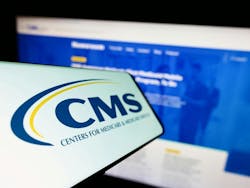The U.S. Center for Medicare and Medicaid Innovation is launching a new “Quality Pathway” to elevate patient-centered quality goals in the design and evaluation of alternative payment models. These efforts have a particular emphasis on patient-reported outcomes.
In a New England Journal of Medicine Catalyst Commentary, CMS’ Susannah M. Bernheim, Noemi Rudolph, Jacob K. Quinton, Julia Driessen, Purva Rawal, and Elizabeth Fowler, said that the Quality Pathway will align model design around quality goals; elevate outcomes and experience measures, particularly patient-reported outcomes; and ensure that evaluations have the ability to assess the impact of models on primary quality goals.
These determinations, they said, will help the Innovation Center make decisions about which models to scale or expand.
In its first decade, the Innovation Center expanded models on the basis of spending reductions and preservation of the quality of care, but it has never pursued expansion of a model primarily on the basis of the model improving the quality of care.
In addition to the agency-wide alignment around quality measures through the Universal Foundation and the continued use of common measures relating to effectiveness, efficiency, and safety, CMS will now prioritize patient-reported measures of outcomes and experience in its models.
The Quality Pathway will at times lead to the development, testing, and introduction of new measures to address gaps in validated measures addressing a model’s quality goals. The CMS officials say they recognize that new measures, especially those that are patient-reported, can be challenging for model participants who need time to incorporate them into clinical workflows. “As was done with the introduction of a novel patient-reported measure of functional status in the Comprehensive Care for Joint Replacement model, we may incrementally introduce new measures before tying performance to payment,” they write. “Investment in developing these measures will also consider their potential for expanded future use.
The authors pointed to the recent publication of the Million Hearts evaluation as an example of a randomized control model design that provided financial support to a control group to provide key clinical data. “This gold standard comparison allowed for rigorous evaluation of the model goal of lowering heart attack and stroke risk among beneficiaries cared for by model participants.”
CMS might pursue novel quasi-experimental designs, such as stepped wedge designs, where some model participants are selected to start the interventions before others, and CMS can make comparisons between those who began the model earlier versus later. CMS will also invest in collecting key quality indicators, beyond information obtained from claims data, from comparison groups.
Here is an example of the type of quality measurement the Innovation Center is considering: the new Guiding an Improved Dementia Experience model introduces multiple types of caregiver support, such as enhanced training and opportunities for respite services. Additionally, because reducing the strain on caregivers is central to the model aims, CMS plans to incorporate a new quality measure of caregiver burden. This measure would provide model participants insight into progress and help CMS track and incentivize improvement in this critical domain; this measure may also then apply to future clinical scenarios.


